
Launched in February 2008 by Chris Wanstrath, P. J. Hyett, Tom Preston-Werner and Scott Chacon using Ruby on Rails, Github is a web-based Git(Git is a distributed version control system for tracking changes in source code during software development) repository hosting service which primarily offers distributed version control and source code management functionality of git. As per Github website,
GitHub is a development platform inspired by the way you work. From open source to business, you can host and review code, manage projects, and build software alongside 50 million developers.
In simple terms, GitHub is like Instagram for geeks. Instead of uploading beautiful pictures, you can upload software. Any programmer/user can comment or review the uploaded code, even can add their contribution to it and improve it. This helps to decentralize programming, making coding a little more anarchic, a little more fun, and a lot more productive. On June 4, 2018, Microsoft acquired GitHub for $7.5 billion. As of 2020, there were more than 100 million Repositories hosted in GitHub with a userbase of 40 Million users worldwide and with 32 million monthly visitors as per Alexia ranking.
Blockchain and Importance of Open Source
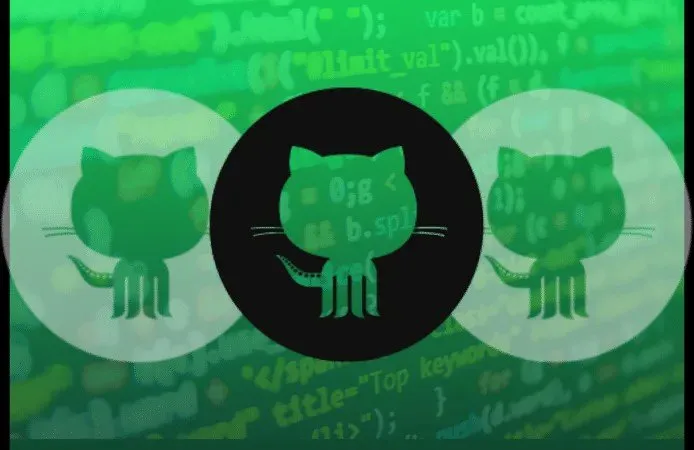 Before we understand the importance of Github activity in a blockchain scheme of things, we should first understand the importance of Open Sorce feature As per Bitcoin’s creator, Satoshi Nakamoto, He referred bitcoin as “a new electronic cash system that’s fully peer-to-peer, with no trusted third party.” The most difficult part of this concept is to establish trust between two unknown parties and is possible only if the software that powers the network is free and open source. Some critics may come up with the argument that it would make the technology vulnerable, but in reality, the open-source nature helps to protect it and maintain that all-important transparency. By nature, it’s necessary?—?but not sufficient?—?for a blockchain’s source code to be open source. This has both been a minimum guarantee and the source of further innovation as the ecosystem keeps growing. Even though we have seen a lot of development in blockchain space, we still face a dilemma when the question of “how to determine the ‘fair’ value of a blockchain asset in today’s marketplace comes up?. It’s because Majority of the projects raise capital via IEO/ICO selling a dream. Unlike traditional markets where we can have “n” number of matrics to evaluate an organization past or future performance, we don’t have that kind of tools when it comes to a blockchain project. All we have is a whitepaper rolled out by the project. As per the research of Wall Street Journal in 2018, it was found that among the more than 3,300 whitepapers they investigated, some 513 engaged in one or more forms of fraud which includes plagiarism, identity theft, fabricating information etc.
Before we understand the importance of Github activity in a blockchain scheme of things, we should first understand the importance of Open Sorce feature As per Bitcoin’s creator, Satoshi Nakamoto, He referred bitcoin as “a new electronic cash system that’s fully peer-to-peer, with no trusted third party.” The most difficult part of this concept is to establish trust between two unknown parties and is possible only if the software that powers the network is free and open source. Some critics may come up with the argument that it would make the technology vulnerable, but in reality, the open-source nature helps to protect it and maintain that all-important transparency. By nature, it’s necessary?—?but not sufficient?—?for a blockchain’s source code to be open source. This has both been a minimum guarantee and the source of further innovation as the ecosystem keeps growing. Even though we have seen a lot of development in blockchain space, we still face a dilemma when the question of “how to determine the ‘fair’ value of a blockchain asset in today’s marketplace comes up?. It’s because Majority of the projects raise capital via IEO/ICO selling a dream. Unlike traditional markets where we can have “n” number of matrics to evaluate an organization past or future performance, we don’t have that kind of tools when it comes to a blockchain project. All we have is a whitepaper rolled out by the project. As per the research of Wall Street Journal in 2018, it was found that among the more than 3,300 whitepapers they investigated, some 513 engaged in one or more forms of fraud which includes plagiarism, identity theft, fabricating information etc.
GitHub as an evaluation matrics
 GitHub activity can be an interesting metric for analyzing upcoming ICOs and ongoing blockchain projects. To have an active Github, the project needs an active community of developers either paid or unpaid( As a community Service like BTC, Ethereum contributors ) behind it. As we all know it, a good developer is not cheap or easy to come by. Either they have to be monetized or should have strong faith in the project to contribute. If we see an active community of developers supporting a project, it simply shows that the project is trustworthy and there is less probability of the project being a scam. This gives the investors more confidence to invest in the project. In the year 2018, cryptosimo was launched with an idea to rank blockchain projects based on GitHub activity. Initially, It started with the ranking of more than 600 projects, later on, cut down to rank 243 cryptocurrencies based on the most popular repo. Let’s have a look at the top-ranking of blockchain projects based on GitHub activity in the past 12 months
GitHub activity can be an interesting metric for analyzing upcoming ICOs and ongoing blockchain projects. To have an active Github, the project needs an active community of developers either paid or unpaid( As a community Service like BTC, Ethereum contributors ) behind it. As we all know it, a good developer is not cheap or easy to come by. Either they have to be monetized or should have strong faith in the project to contribute. If we see an active community of developers supporting a project, it simply shows that the project is trustworthy and there is less probability of the project being a scam. This gives the investors more confidence to invest in the project. In the year 2018, cryptosimo was launched with an idea to rank blockchain projects based on GitHub activity. Initially, It started with the ranking of more than 600 projects, later on, cut down to rank 243 cryptocurrencies based on the most popular repo. Let’s have a look at the top-ranking of blockchain projects based on GitHub activity in the past 12 months  Established in May 2016, Lisk is an open-source project focused on blockchain accessibility. Lisk’s ecosystem offers everyone the opportunity to benefit from blockchain technology through developer tools, cryptocurrency wallets, and a vibrant community
Established in May 2016, Lisk is an open-source project focused on blockchain accessibility. Lisk’s ecosystem offers everyone the opportunity to benefit from blockchain technology through developer tools, cryptocurrency wallets, and a vibrant community 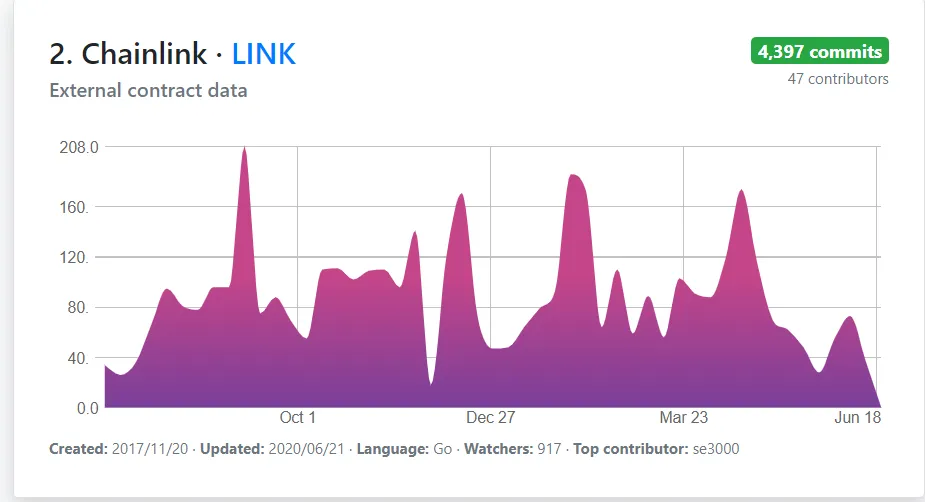 Chainlink (LINK) is a decentralized oracle network which aims to connect smart contracts with data from the real world. Chainlink was developed by Sergey Nazarov, with Steve Ellis as the other co-founder and boast a wide array of partnerships.
Chainlink (LINK) is a decentralized oracle network which aims to connect smart contracts with data from the real world. Chainlink was developed by Sergey Nazarov, with Steve Ellis as the other co-founder and boast a wide array of partnerships. 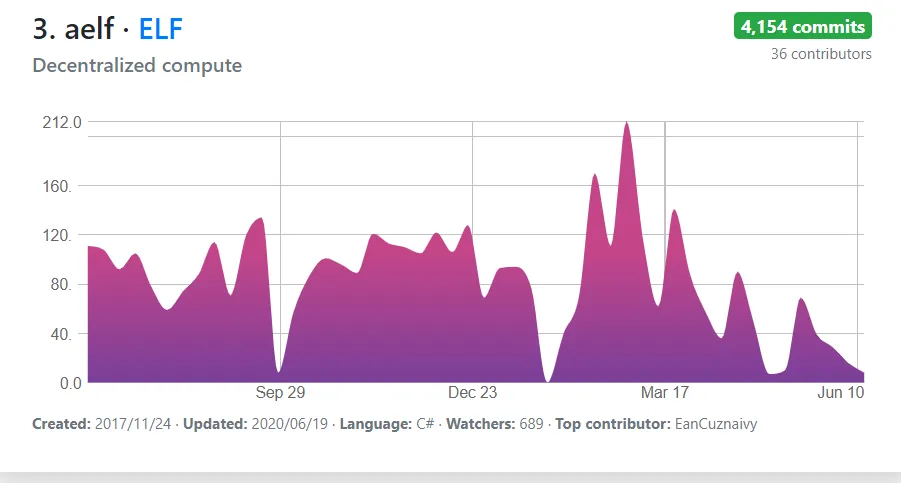 aelf is an open-source blockchain network designed as a complete business solution. ?lf is a decentralized self-evolving cloud computing blockchain network that aims to provide a high-performance platform for commercial adoption of the blockchain.
aelf is an open-source blockchain network designed as a complete business solution. ?lf is a decentralized self-evolving cloud computing blockchain network that aims to provide a high-performance platform for commercial adoption of the blockchain. 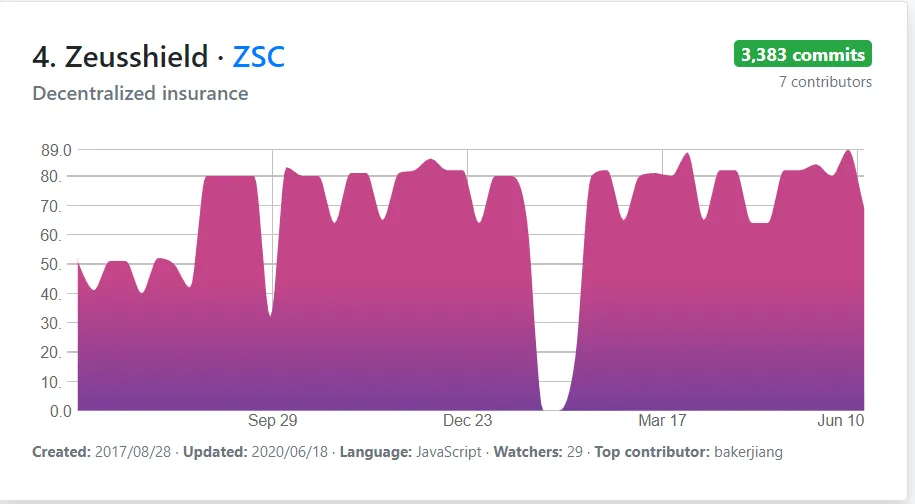 Zeusshield is a blockchain AI insurance solution providing an insurance ecosystem with precision marketing and intelligent insurance claims.
Zeusshield is a blockchain AI insurance solution providing an insurance ecosystem with precision marketing and intelligent insurance claims. 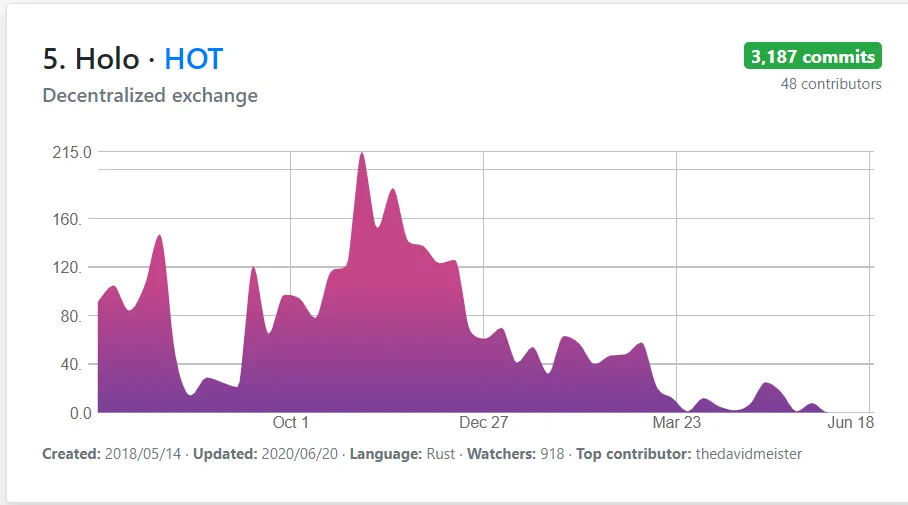 Holo(HOT) is a decentralized application platform that uses peer-to-peer networking for processing agent-centric agreement and consensus mechanisms between users.
Holo(HOT) is a decentralized application platform that uses peer-to-peer networking for processing agent-centric agreement and consensus mechanisms between users. 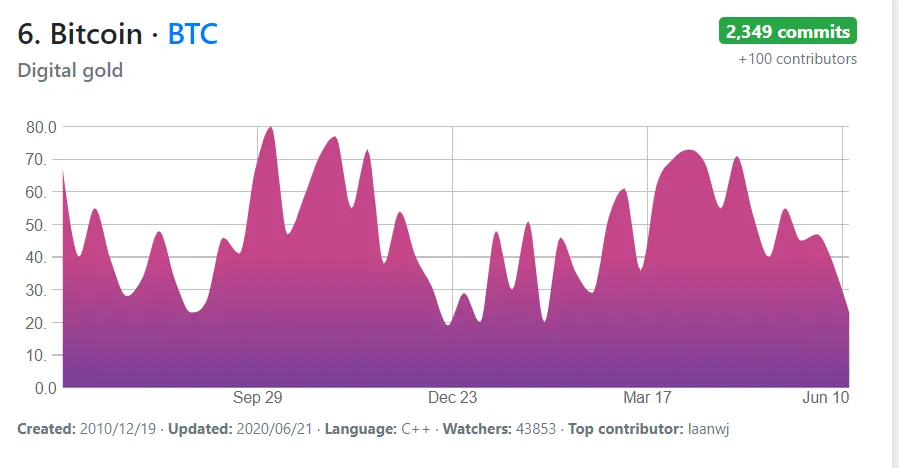 Bitcoin is a digital or virtual currency created in 2009 that uses peer-to-peer technology to facilitate instant payments. Bitcoin was the very first cryptocurrency ever created. The project kickstarted On Oct. 31, 2008, When “Satoshi Nakamoto”, published the world-famous Bitcoin white paper. Cryptomiso ranking was not without critics. As per Santiment CTO Valentin Mihov, If a project gets forked, the forked projects will inherit all the code commits of their predecessors in CryptoMiso ranking. For eg, Particl a project that has forked bitcoin source code had “inherited” all the commits and contributors of Bitcoin. This can lead to a lot of unqualified candidates getting a place in the ranking table without doing any actual work.To improve GitHub activity ranking, Santiment team have come up with a better way of evaluation. They are taking into consideration the below points like
Bitcoin is a digital or virtual currency created in 2009 that uses peer-to-peer technology to facilitate instant payments. Bitcoin was the very first cryptocurrency ever created. The project kickstarted On Oct. 31, 2008, When “Satoshi Nakamoto”, published the world-famous Bitcoin white paper. Cryptomiso ranking was not without critics. As per Santiment CTO Valentin Mihov, If a project gets forked, the forked projects will inherit all the code commits of their predecessors in CryptoMiso ranking. For eg, Particl a project that has forked bitcoin source code had “inherited” all the commits and contributors of Bitcoin. This can lead to a lot of unqualified candidates getting a place in the ranking table without doing any actual work.To improve GitHub activity ranking, Santiment team have come up with a better way of evaluation. They are taking into consideration the below points like
- number of code pushes
- number of issue interactions?—?
- add/delete/edit comments in issues
- number of pull request interactions?—?add/delete/edit comments in PRs
- number of GitHub wiki edits
- number of comments on commits
- number of repos open sourced
Based on the above parameters, Santiment came up with their own 30-day dev activity ranking table 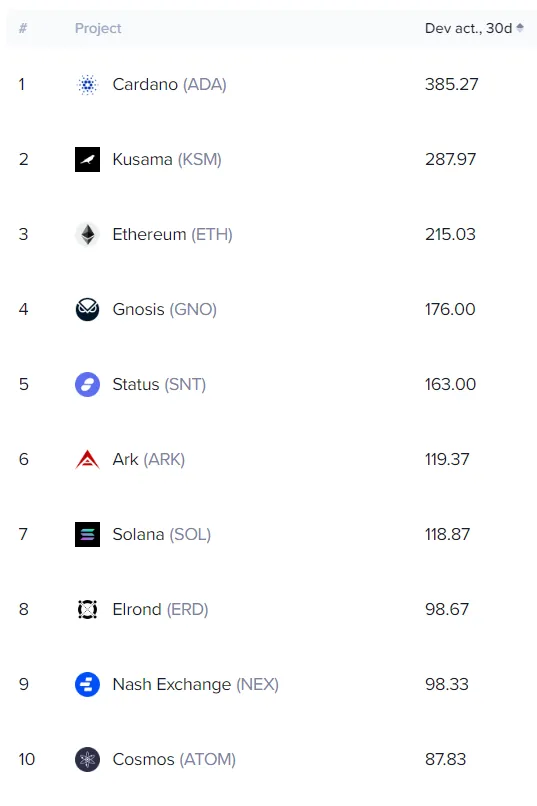
Conclusion
We just saw various approaches to evaluate the GitHub activity of blockchain projects and thereby coming to a conclusion of how active they are with project development. These kinds of rankings from such data sites can help investors adraw useful insights and hope this will help them to make better decisions when it comes to investments in a project.
















